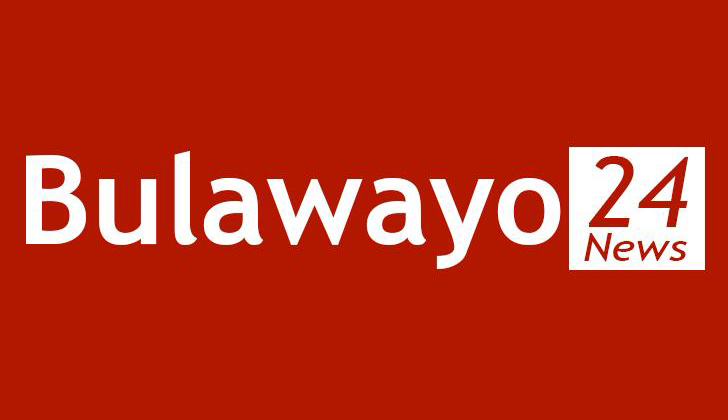News / National
Zimbabwe govt urged to address Bulawayo de-industrialisation
17 Apr 2025 at 09:01hrs | Views

Former Speaker of Parliament, Lovemore Moyo, has urged the Zimbabwean government to urgently address the ongoing de-industrialisation of Bulawayo, warning that the city's transformation from an industrial hub to a consumer of low-quality imports threatens its economic future.
Speaking in an interview with Southern Eye, Moyo expressed deep concern over the state of the once-thriving city, calling for the formulation of a Matebeleland-specific industrial development strategy.
"We should have a Matebeleland industrial development plan. Any country with a strong development plan has each area marked for its specific use," he said. "How do you revive the clothing industry when you have opened up for the Chinese to bring their cheap products into the country?"
Moyo lamented that Bulawayo has become a "branch city," where companies from outside establish outlets that serve more as warehouses than engines of local economic activity. He urged participants of the upcoming Zimbabwe International Trade Fair (ZITF) to go beyond exhibition and engage in meaningful dialogue focused on attracting real investment and manufacturing into the city.
Adding to Moyo's concerns, Zimbabwe Congress of Trade Unions (ZCTU) Western Region chairperson, Ambrose Sibindi, pointed to the visible signs of industrial collapse, particularly the partitioning of large retail spaces into smaller informal shops.
"The government has been making false promises. There should be a budget earmarked for the revival of industries," said Sibindi. "The influx of Chinese shops with their finished products shows that there is no light at the end of the tunnel."
The issue was also raised during the recently held Bulawayo Development Conference, where Mayor David Coltart painted a grim picture of the city's economic woes. "Our city faces deep challenges: de-industrialisation, job losses, water scarcity, aging infrastructure, and uneven economic opportunities," he said.
Once the heartbeat of Zimbabwe's manufacturing sector, Bulawayo has witnessed a sharp decline in industrial activity over the past two decades. The city has lost scores of large and medium-sized companies due to factors such as outdated equipment, lack of capital, competition from cheap imports, and policy inconsistencies.
Estimates suggest that since 2009, nearly 30,000 jobs have been lost in Bulawayo as firms either downsized, relocated, or shut down entirely. Hopes had been pinned on the government's US$40 million Distressed Industries and Marginalised Areas Fund (DIMAF), launched in 2011 to help ailing companies access cheap loans, but the fund failed to stop the tide of closures.
Moyo stressed that unless deliberate and regionally tailored interventions are made, Bulawayo's industrial base could disappear entirely. "What we need is a long-term industrial policy anchored in local empowerment, infrastructure development, and protection of strategic sectors," he said.
As ZITF 2025 approaches, the spotlight is once again on Bulawayo — not just as a host city for a high-profile trade showcase, but as a symbol of the urgent need to revive Zimbabwe's ailing manufacturing centres.
Speaking in an interview with Southern Eye, Moyo expressed deep concern over the state of the once-thriving city, calling for the formulation of a Matebeleland-specific industrial development strategy.
"We should have a Matebeleland industrial development plan. Any country with a strong development plan has each area marked for its specific use," he said. "How do you revive the clothing industry when you have opened up for the Chinese to bring their cheap products into the country?"
Moyo lamented that Bulawayo has become a "branch city," where companies from outside establish outlets that serve more as warehouses than engines of local economic activity. He urged participants of the upcoming Zimbabwe International Trade Fair (ZITF) to go beyond exhibition and engage in meaningful dialogue focused on attracting real investment and manufacturing into the city.
Adding to Moyo's concerns, Zimbabwe Congress of Trade Unions (ZCTU) Western Region chairperson, Ambrose Sibindi, pointed to the visible signs of industrial collapse, particularly the partitioning of large retail spaces into smaller informal shops.
The issue was also raised during the recently held Bulawayo Development Conference, where Mayor David Coltart painted a grim picture of the city's economic woes. "Our city faces deep challenges: de-industrialisation, job losses, water scarcity, aging infrastructure, and uneven economic opportunities," he said.
Once the heartbeat of Zimbabwe's manufacturing sector, Bulawayo has witnessed a sharp decline in industrial activity over the past two decades. The city has lost scores of large and medium-sized companies due to factors such as outdated equipment, lack of capital, competition from cheap imports, and policy inconsistencies.
Estimates suggest that since 2009, nearly 30,000 jobs have been lost in Bulawayo as firms either downsized, relocated, or shut down entirely. Hopes had been pinned on the government's US$40 million Distressed Industries and Marginalised Areas Fund (DIMAF), launched in 2011 to help ailing companies access cheap loans, but the fund failed to stop the tide of closures.
Moyo stressed that unless deliberate and regionally tailored interventions are made, Bulawayo's industrial base could disappear entirely. "What we need is a long-term industrial policy anchored in local empowerment, infrastructure development, and protection of strategic sectors," he said.
As ZITF 2025 approaches, the spotlight is once again on Bulawayo — not just as a host city for a high-profile trade showcase, but as a symbol of the urgent need to revive Zimbabwe's ailing manufacturing centres.
Source - southern eye



























